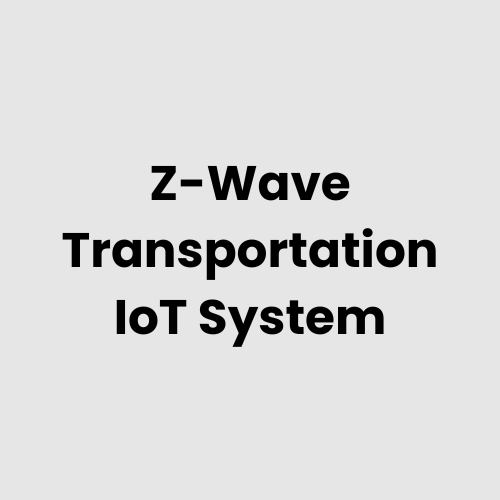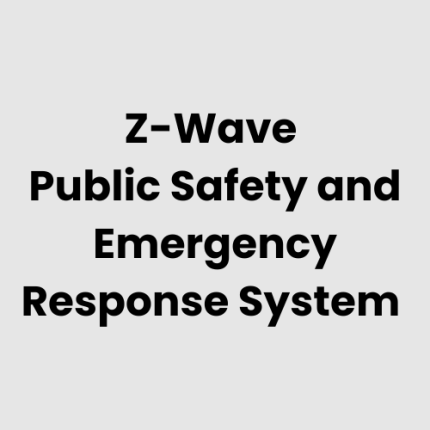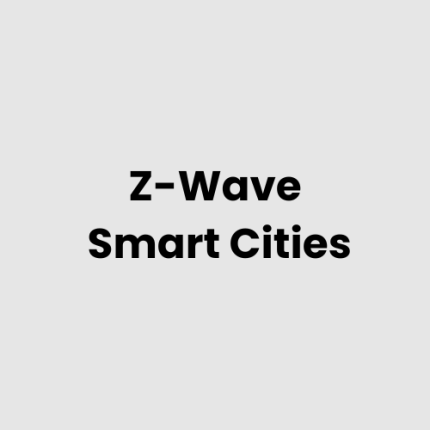Description
Technical Architecture of the z-wave Enabled Transportation IoT System
The technical architecture of GAO Tek’s z-wave Enabled Transportation IoT System integrates distributed sensors, edge devices, and centralized data analytics platforms. Key elements include:
- Sensor Layer: Z-wave-enabled sensors for vehicle tracking, traffic monitoring, and environmental data collection.
- Edge Devices: Gateways and hubs to process and transmit real-time data securely over the z-wave network.
- Centralized Platform: A cloud or local server-based control system analyzing traffic patterns, managing fleet operations, and generating predictive insights.
- User Interfaces: Web and mobile applications for remote monitoring and operational control.
- Security Infrastructure: Built-in encryption and secure communication protocols to prevent unauthorized access.
Hardware of the z-wave Enabled Transportation IoT System
- Z-wave Sensors: GPS trackers, temperature sensors, and accelerometers.
- Gateways: Communication hubs that aggregate and relay data.
- IoT Nodes: Devices installed in vehicles and transport hubs for data acquisition.
- Servers: For centralized or local data processing.
- Network Infrastructure: Repeaters and signal boosters to ensure connectivity across vast areas.
- Power Management Units: Solar-powered systems or battery backups for field-deployed devices.
Physical Placement Considerations of the Hardware
- Vehicles: Sensors installed on dashboards, cargo holds, and undercarriages to monitor operational parameters.
- Roadways: Smart traffic signals, surveillance cameras, and air quality monitors placed strategically along major routes.
- Warehouses and Terminals: Gateways and sensors for vehicle entry/exit logging, cargo management, and operational optimization.
- Public Transport Systems: Passenger-counting sensors and GPS trackers in buses, trains, and subways.
- Highways: Devices placed at rest areas and toll booths for real-time data collection.
Hardware Architecture of the z-wave Enabled Transportation IoT System
The hardware architecture includes:
- Distributed Nodes: Z-wave-enabled sensors for real-time monitoring and data collection.
- Data Aggregators: Gateways processing and forwarding data to a central hub.
- Server Infrastructure: Local and cloud-based servers hosting control applications.
- Communication Network: Mesh-based z-wave connectivity ensuring redundancy and reliability.
- Backup Systems: Redundant power supplies and failover systems for critical infrastructure.
Deployment Considerations of the z-wave Enabled Transportation IoT System
- Scalability: Ensure hardware and software support incremental expansion as transportation demands grow.
- Interoperability: Compatibility with existing transportation systems and standards.
- Reliability: Deploy redundant networks and fail-safe mechanisms for critical operations.
- Maintenance: Implement remote diagnostic tools to identify and address system faults promptly.
- Compliance: Adhere to industry-specific regulations and standards for transportation IoT systems.
List of Relevant Industry Standards and Regulations
- ISO/IEC 18000 (RFID Standards)
- ISO 26262 (Functional Safety of Automotive Systems)
- IEC 61508 (Functional Safety of Electrical Systems)
- NIST Cybersecurity Framework
- SAE J3061 (Cybersecurity in Automotive Systems)
- GDPR (General Data Protection Regulation)
- ITS Standards (Intelligent Transportation Systems)
- EN 50155 (Electronic Equipment for Railways)
Local Server Version of the z-wave Enabled Transportation IoT System
GAO Tek offers a local server version designed for organizations requiring on-premises data control. This setup includes:
- Local Data Centers: For secure, real-time processing of traffic and operational data.
- Customizable Software: Tailored to meet specific transportation requirements.
- Offline Capabilities: Ensures continuous operation in areas with limited internet connectivity.
- Enhanced Security: Full data control with strict access policies and encryption.
Cloud Integration and Data Management
The cloud-enabled version of GAO Tek’s z-wave Enabled Transportation IoT System provides:
- Real-Time Data Processing: Immediate analysis of transportation metrics such as vehicle locations and traffic density.
- Predictive Analytics: AI-driven insights for optimizing routes, reducing fuel consumption, and improving safety.
- Scalability: Support for growing transportation networks and increasing data volumes.
- Data Storage: Secure, long-term storage of historical data for regulatory compliance and future planning.
- Remote Access: Operational control and data visualization through cloud dashboards accessible from anywhere.
GAO Tek’s expertise ensures seamless deployment, maintenance, and scalability for both local and cloud-based solutions.
GAO Case Studies
USA
- Los Angeles, California
A comprehensive Z-wave IoT system was deployed across city bus terminals to monitor passenger traffic and vehicle schedules in real time. The system streamlined operations, reduced delays, and provided accurate arrival predictions for commuters, improving the overall transit experience.
- Chicago, Illinois
Freight management facilities in Chicago implemented Z-wave-enabled IoT systems to optimize loading and unloading times. By monitoring vehicle movements and storage conditions, operational efficiency increased, and fuel consumption decreased significantly.
- New York City, New York
GAO Tek’s solution enhanced traffic monitoring through Z-wave-enabled sensors installed at key intersections. These devices relayed real-time data, enabling authorities to dynamically adjust traffic signals and minimize congestion during peak hours.
- Dallas, Texas
A logistics company in Dallas adopted Z-wave IoT for route optimization and real-time cargo tracking. This deployment reduced delivery times and provided better visibility into vehicle conditions during transit.
- San Francisco, California
Public transportation systems in San Francisco integrated Z-wave IoT sensors to track vehicle locations and monitor fuel efficiency. The system contributed to lower emissions and enhanced commuter safety.
- Atlanta, Georgia
Z-wave-enabled IoT devices were installed in a fleet of city maintenance vehicles to monitor fuel use, route adherence, and equipment status, resulting in substantial cost savings for the local government.
- Seattle, Washington
Seattle’s smart traffic initiative utilized Z-wave IoT technology for adaptive traffic light systems. The implementation reduced travel time and improved pedestrian safety in high-density areas.
- Miami, Florida
A maritime logistics hub in Miami deployed Z-wave IoT sensors to monitor container conditions, such as temperature and humidity, ensuring compliance with shipping regulations and reducing cargo spoilage.
- Phoenix, Arizona
GAO Tek supported the installation of Z-wave-enabled parking sensors in Phoenix to provide real-time availability data to drivers, significantly reducing vehicle idling and air pollution in busy urban areas.
- Houston, Texas
Oil and gas transport in Houston incorporated Z-wave IoT systems to monitor pipeline integrity and vehicle movements, enhancing safety and operational visibility across the supply chain.
- Detroit, Michigan
Z-wave IoT solutions were used to modernize a large-scale automotive logistics center in Detroit, improving vehicle tracking accuracy and reducing inventory errors.
- Denver, Colorado
The Denver Regional Transportation District installed Z-wave devices on light rail vehicles to collect operational data, enabling predictive maintenance and reducing service disruptions.
- Boston, Massachusetts
In Boston, smart bus shelters equipped with Z-wave IoT technology displayed real-time arrival times and traffic updates, enhancing the commuter experience in the city’s transit system.
- Portland, Oregon
A regional trucking company in Portland adopted Z-wave IoT for fleet tracking and fuel monitoring, leading to improved on-time delivery rates and reduced carbon emissions.
- Las Vegas, Nevada
In Las Vegas, smart traffic cameras with Z-wave IoT connectivity provided authorities with immediate data on congestion patterns, enabling rapid response to accidents and bottlenecks.
Canada
- Toronto, Ontario
The City of Toronto integrated Z-wave IoT devices into its public transit system to monitor vehicle location and passenger volume. The system allowed transit operators to adjust schedules dynamically, improving service reliability and reducing delays.
- Vancouver, British Columbia
Vancouver’s port facilities adopted Z-wave-enabled IoT systems to monitor and optimize container loading and unloading processes. This implementation reduced turnaround times and enhanced overall operational efficiency.
Navigation Menu for Z-Wave
- Z- Wave Gateways/Hubs
- Z-Wave End Devices
- Z-Wave-Cloud, Server, PC& Mobile System
- Z-Wave Accessories
- Z-Wave Resources
Navigation Menu for IoT
Our products are in stock and can be shipped anywhere in the continental U.S. or Canada from our local warehouse. For any further information, please fill out this form or email us.
We are actively looking for partners who are like us located in the U.S. and Canada. For more information on partnering with GAO, please visit Partner with GAO Tek Inc. It lists various ways to partner with GAO, such as OEM Partnerships, Technology Integration, Distribution and Reselling Opportunities, Presenting at the Leading Event Tek Summit, Joint R&D Projects, Training and Consulting Services, Industry-Specific Collaborations, Research and Academic Partnerships.



